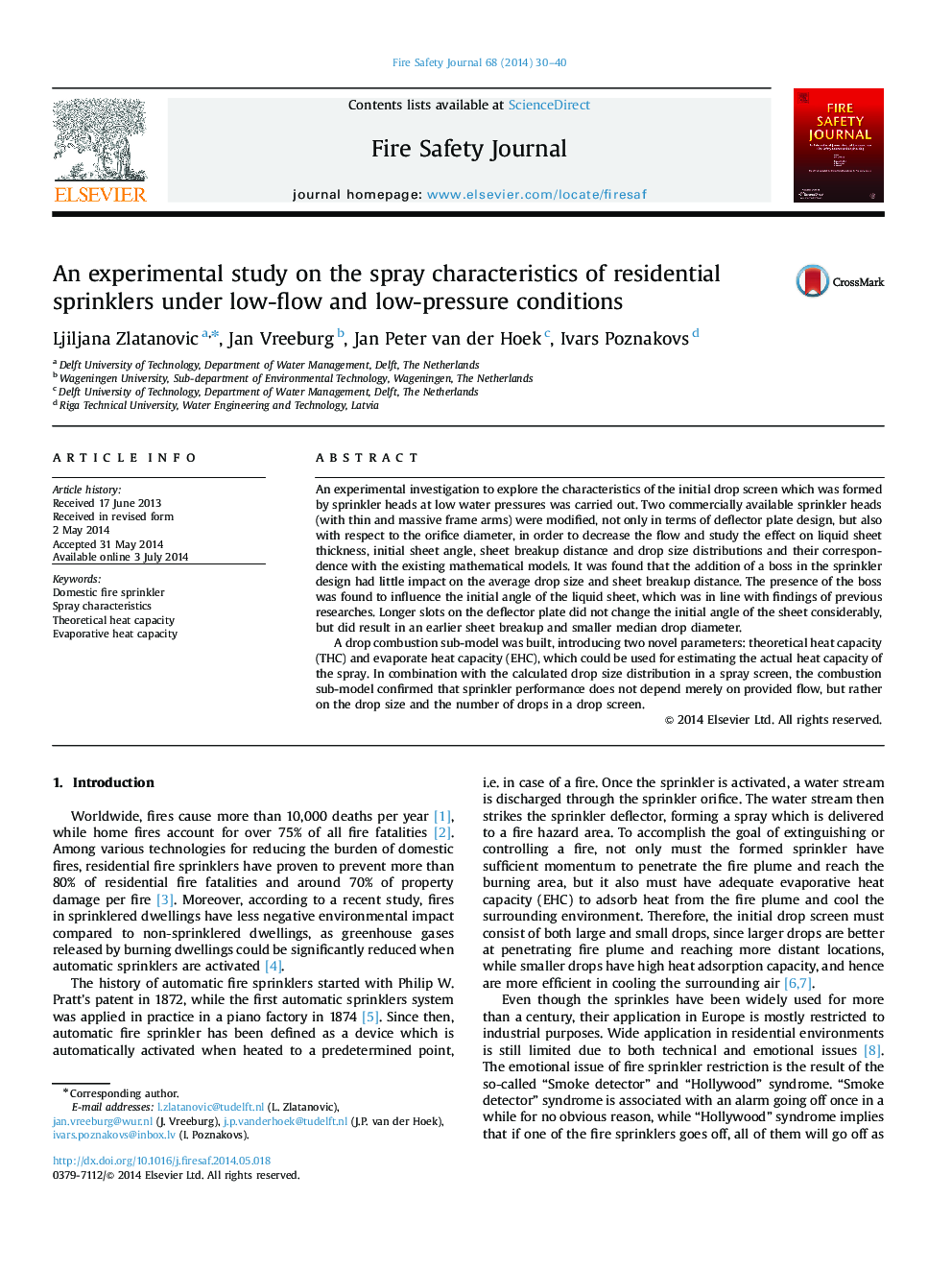| Article ID | Journal | Published Year | Pages | File Type |
|---|---|---|---|---|
| 269820 | Fire Safety Journal | 2014 | 11 Pages |
•The initial sprinkler spray formed under low pressure conditions was studied.•Strong relation between sprinkler design parameters and spray pattern was found.•The increase in water temperature from 17 to 35°C had low impact on drop diameter.•Theoretical and evaporative heat capacity (THC and EHC) parameters were introduced.•THC and EHC might be used as a rapid experimental tool for water spray evaluation.
An experimental investigation to explore the characteristics of the initial drop screen which was formed by sprinkler heads at low water pressures was carried out. Two commercially available sprinkler heads (with thin and massive frame arms) were modified, not only in terms of deflector plate design, but also with respect to the orifice diameter, in order to decrease the flow and study the effect on liquid sheet thickness, initial sheet angle, sheet breakup distance and drop size distributions and their correspondence with the existing mathematical models. It was found that the addition of a boss in the sprinkler design had little impact on the average drop size and sheet breakup distance. The presence of the boss was found to influence the initial angle of the liquid sheet, which was in line with findings of previous researches. Longer slots on the deflector plate did not change the initial angle of the sheet considerably, but did result in an earlier sheet breakup and smaller median drop diameter.A drop combustion sub-model was built, introducing two novel parameters: theoretical heat capacity (THC) and evaporate heat capacity (EHC), which could be used for estimating the actual heat capacity of the spray. In combination with the calculated drop size distribution in a spray screen, the combustion sub-model confirmed that sprinkler performance does not depend merely on provided flow, but rather on the drop size and the number of drops in a drop screen.
